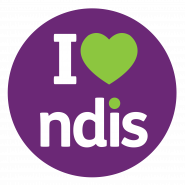NDIS Occupational Therapy – Assistive Technology, Equipment and Aids
We want you to develop independence through technology.
Our Occupational Therapists are passionate about helping you lead a more active and independent life. Whether your aim is more freedom in daily living, attending a weekly book group, or learning to drive, we’re here to support you to get you over any barriers.
Assistive technology for Occupational Therapy is an umbrella term for any equipment or aid that improves functioning and independence, and supports a person with disability to reach their goals in the home, the community and the workplace. With the support of this technology, no matter what’s important to you, you can achieve, develop and learn just like everyone else.
Ready to get started?

Finding the right occupational therapy tools for the job
It’s vital to be properly assessed by a trained health professional to ensure the assistive technology chosen is the best match and the right tool for the task. Our Occupational Therapists have the skills, qualifications and experience to carry out functional capacity assessment for specialised equipment prescription, to improve your functional capabilities.
Without a proper assessment by an experienced professional, there’s a high risk of choosing a technology that’s an inadequate match for your abilities, needs and preferences. This approach can even cause physical harm, as with providing wheelchairs without pressure relief cushions for people with spinal injury.
We can link your goals with the correct supports needed to achieve them. For example, you may have problems with your vision, but want to improve your ability to follow a recipe independently, to support cooking for yourself and your family. After a capacity assessment, our OT may prescribe you with adaptive living equipment, such as a liquid level indicator, or talking kitchen scales, so that you can succeed in this area.
No matter your needs, our experts will work with you to identify the most appropriate assistive equipment, technology and home modifications for your situation. Once identified, we then go on to select, buy, set up and train you in the chosen devices or aids, so that they’re correctly fitted, used and you’re set up for safety and success.
Prescribing technology
Trained health professionals are needed not only for the assessment stage but also for the proper prescription, fitting, user training and follow-up of assistive technology and occupational therapy equipment for home.
After an occupational therapy assistive technology assessment, we’ll trial various assistive technology options with you, to see what works best. We’ll also spend time with you to make sure it’s the right tool for the job.
Below is a list of the types of occupational therapy tools and technologies we typically prescribe for people with disability, to help them improve their independence, safety, and quality of life.
Types of assistive equipment for occupational therapy
Aids and devices
- Bathroom rails
- Cutlery with thick handles for easy grip
- Long handled combs and brushes
- Swivel seat cushion to help get in and out of the car
- Modified computer keyboard and mouse
Assistive technology
- Wheelchair
- Car seat
- Pressure mattress
- Sling or hoist
- Complex home modifications
- Mobile or ceiling hoist
- Reminders applications
- Other types of visual assistive technology
- Reminders applications
Are you ready to get started? It’s easy!
Why choose us?

Achieve your goals

Local allied health professionals

Multidisciplinary Care
Multidisciplinary care is when a team of health professionals with different skills collaborate to support as many of your needs as possible. Our multidisciplinary team can support you reach your goals!
What People Say About Us
Occupational Therapy Equipment & Assistive Technology Frequently Asked Questions
Assistive technology in occupational therapy refers to the use of devices, equipment, and software to help individuals with disabilities improve their independence and daily living skills.
Assistive equipment and technology can be used in many different ways, depending on the individual’s needs and goals. It may take the form of a specialised keyboard or mouse for a person with limited hand function, or a power wheelchair for mobility.
Examples of assistive technology in occupational therapy include:
- Environmental control systems, which allow individuals to control their home environment (including lights, temperature, appliances) using assistive technology devices.
- Adaptive equipment for self-care activities, such as dressing aids, shower chairs, and specialised utensils.
- Vision aids, such as magnifiers and text-to-speech software, for people with visual impairments.
- Communication devices for people with speech or language difficulties.
- Equipment to help with community access support.
The process for obtaining assistive technology and occupational therapy aids for daily living will depend on the specific device or equipment needed.
Generally, the first step is to undergo an assessment with a healthcare professional, such as an occupational therapist, to determine what type of assistive technology would be most beneficial.
Following the assessment, the healthcare professional will typically provide a prescription for the recommended assistive technology device or equipment. The prescription will outline the specific device or equipment needed, as well as any customisations or modifications if required.
Once you have undergone an assessment with Ability Action Australia, our team will work with you to try out different assistive technology options and determine which one is most effective for your needs. We will also provide guidance and support to ensure that the tool is suitable.
Yes, assistive technology can be customised to meet an individual’s specific needs. In fact, customisation is often an essential part of the assistive technology process, as each individual may have unique needs and requirements.
Customisation may involve modifying an off-the-shelf device or creating a completely new device or piece of equipment.

NDIS Occupational Therapy
The National Disability Insurance Scheme (NDIS) is a way of supporting people with permanent and significant disability. The NDIS is designed to give individuals greater choice and control over when, where and how their funded supports are provided. The specific support and funding available is based on each individual’s specific needs. You can find out more about what therapeutic supports are funded by referring to the NDIS website.
Ability Action Australia has the capability to provide Occupational Therapy Australia wide.




